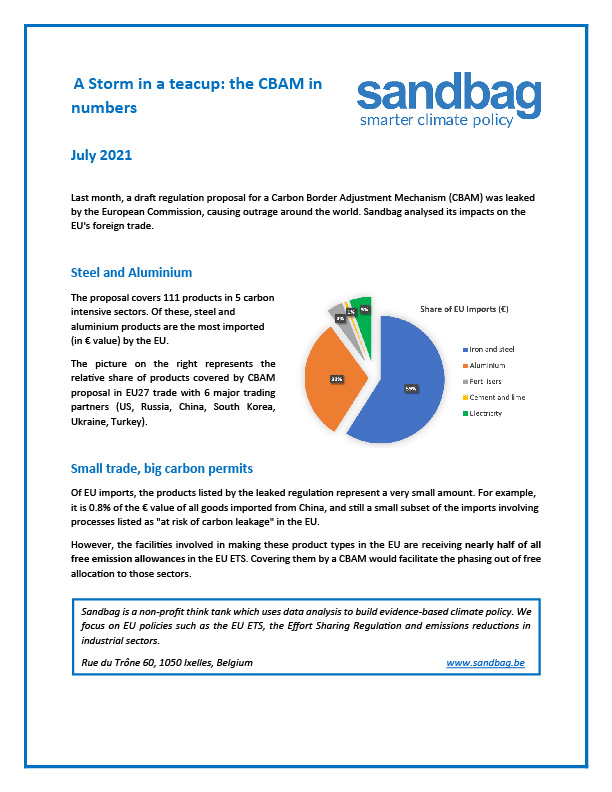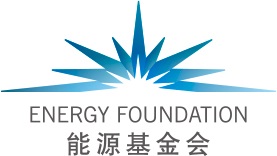A Storm in a Teacup: the leaked CBAM regulation in numbers
[Update: check out our latest analysis of the Fit For 55’s CBAM proposal]
Last month, a draft regulation proposal for a Carbon Border Adjustment Mechanism (CBAM) was leaked by the European Commission. Sandbag analysed its scope and impacts on the EU’s foreign trade.
Steel and Aluminium
The proposal covers 111 products in 5 carbon intensive sectors. Of these, steel and aluminium products are the most imported (in € value) by the EU.
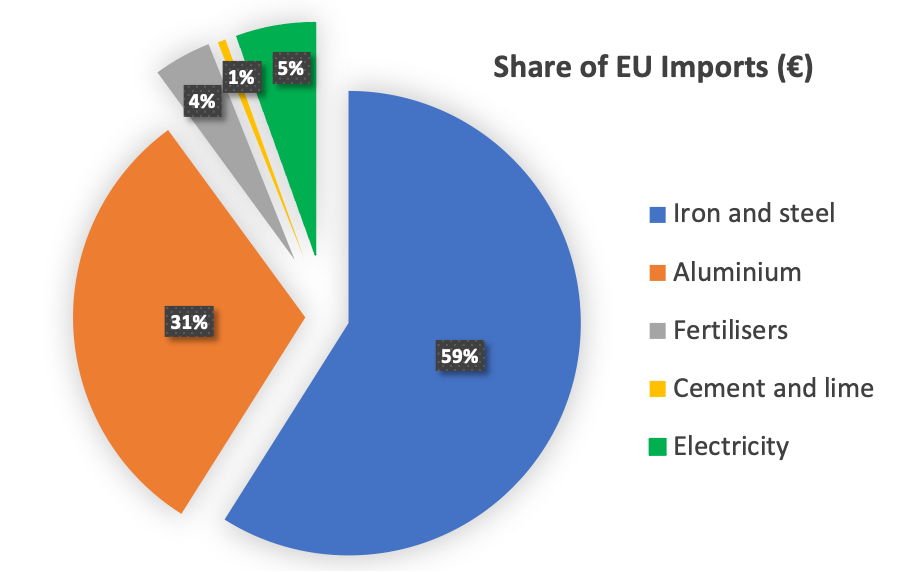
Relative share of products covered by CBAM proposal in EU27 trade with 6 major trading partners (US, Russia, China, South Korea, Ukraine, Turkey).
Small trade, big carbon permits
Of EU imports, the products listed by the leaked regulation represent a very small amount. For example, it is 0.8% of the € value of all goods imported from China, and still a small subset of the imports involving processes listed as “at risk of carbon leakage” in the EU.
However, the facilities involved in making these product types in the EU are receiving nearly half of all free emission allowances in the EU ETS. Covering them by a CBAM would facilitate the phasing out of free allocation to those sectors.
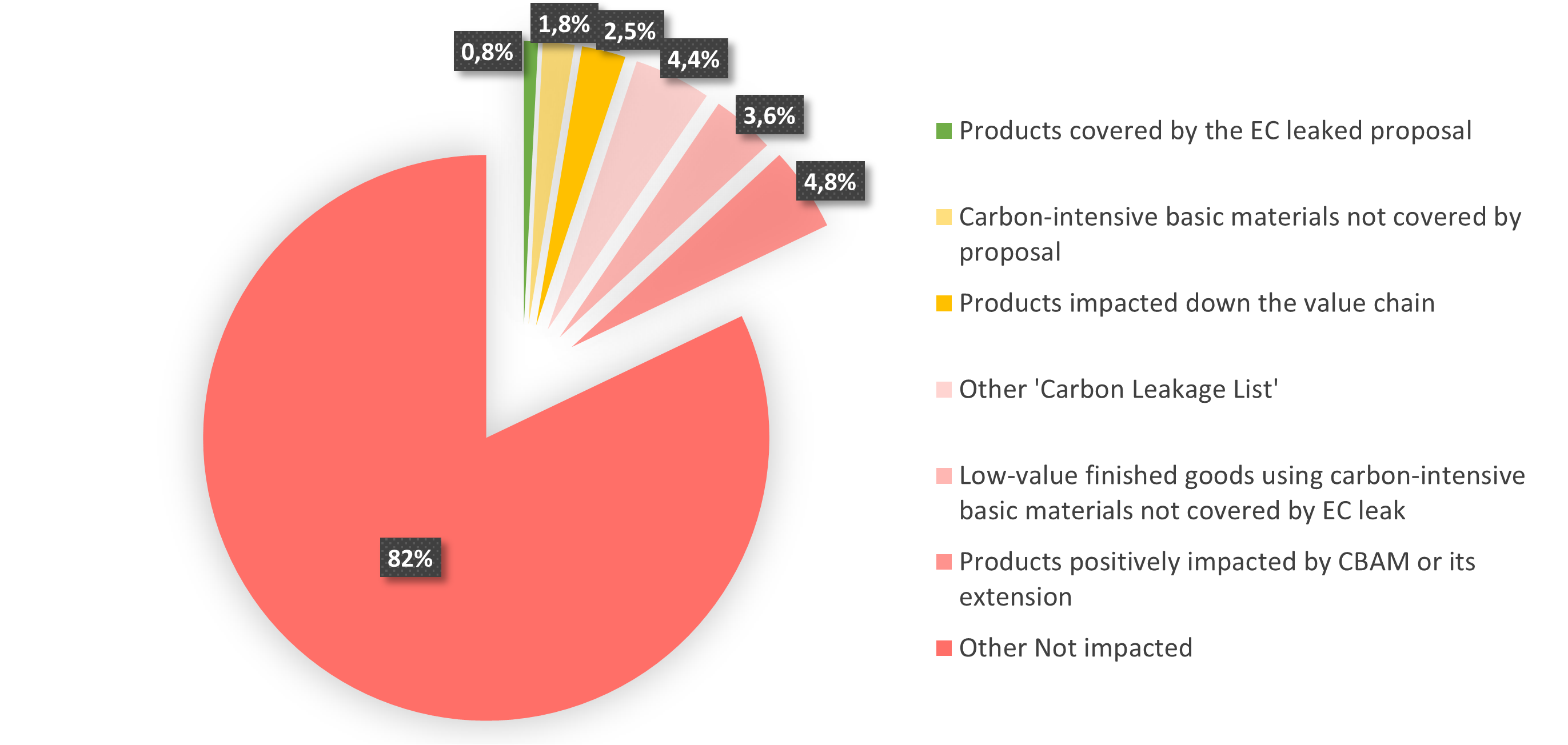
Share of Chinese exports to the EU
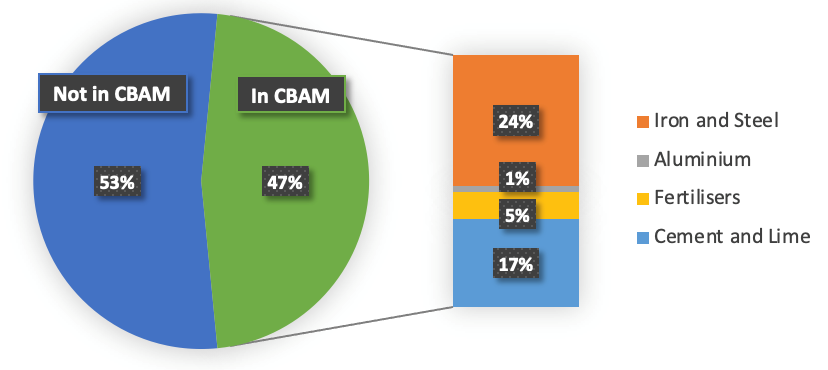
CBAM Free Allocation Scope
‘Gross’ CBAM and its knock-on effects
The CBAM is paid by importers of foreign goods, but it is partly recovered by selling the goods at higher prices, thanks to cost pass-through.
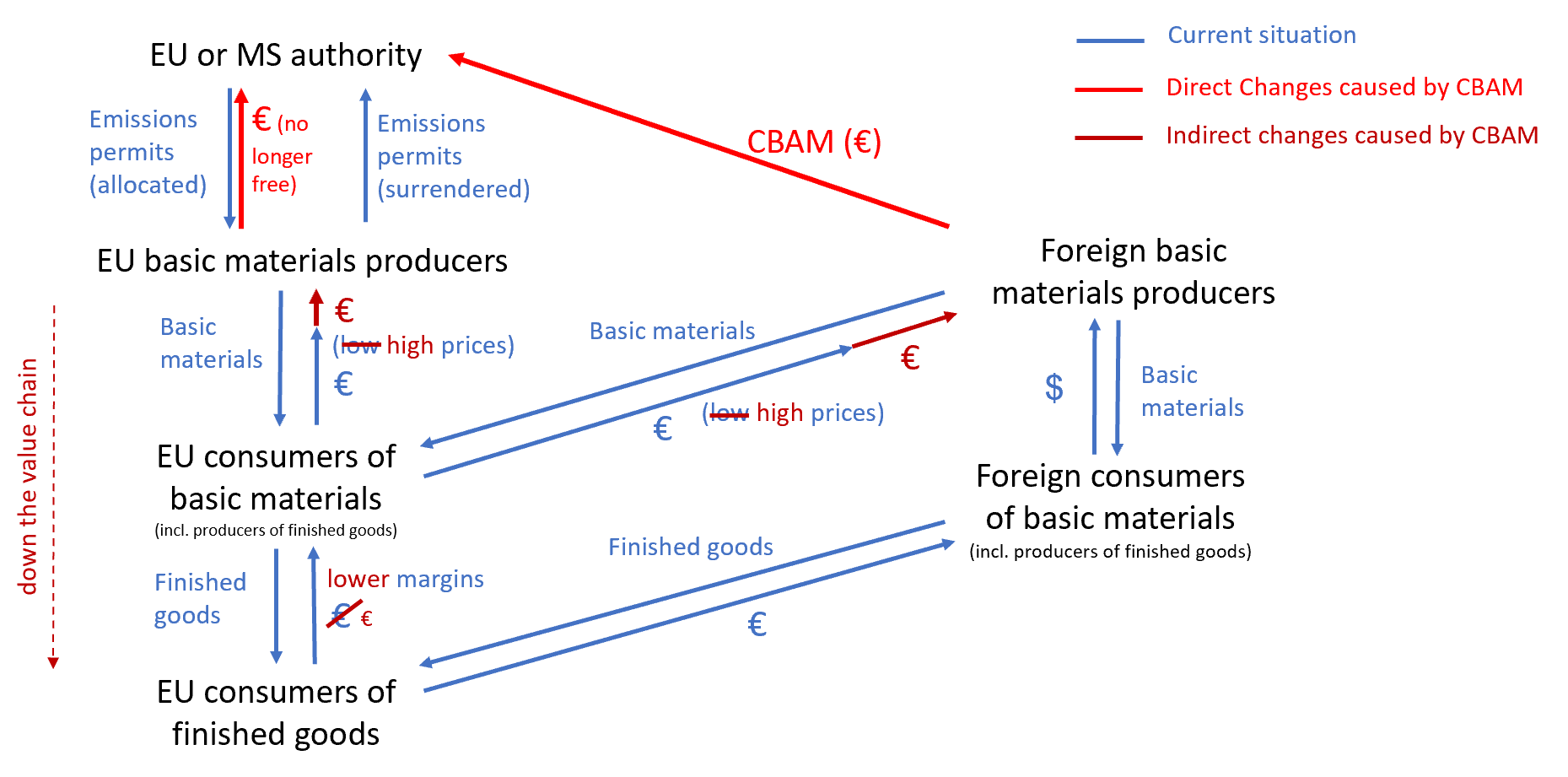
Impact of a CBAM on different stakeholders
Below are the expected cost of the CBAM on the importers of products covered by the leaked regulation. According to our estimates, gross CBAM (before price effect) ranges between €34m (for US imports) and 1.7bn (for Russians imports). Net CBAM cost (i.e. balance after additional revenue from price increase) would only range between nearly zero (US) and €316m (Turkey).
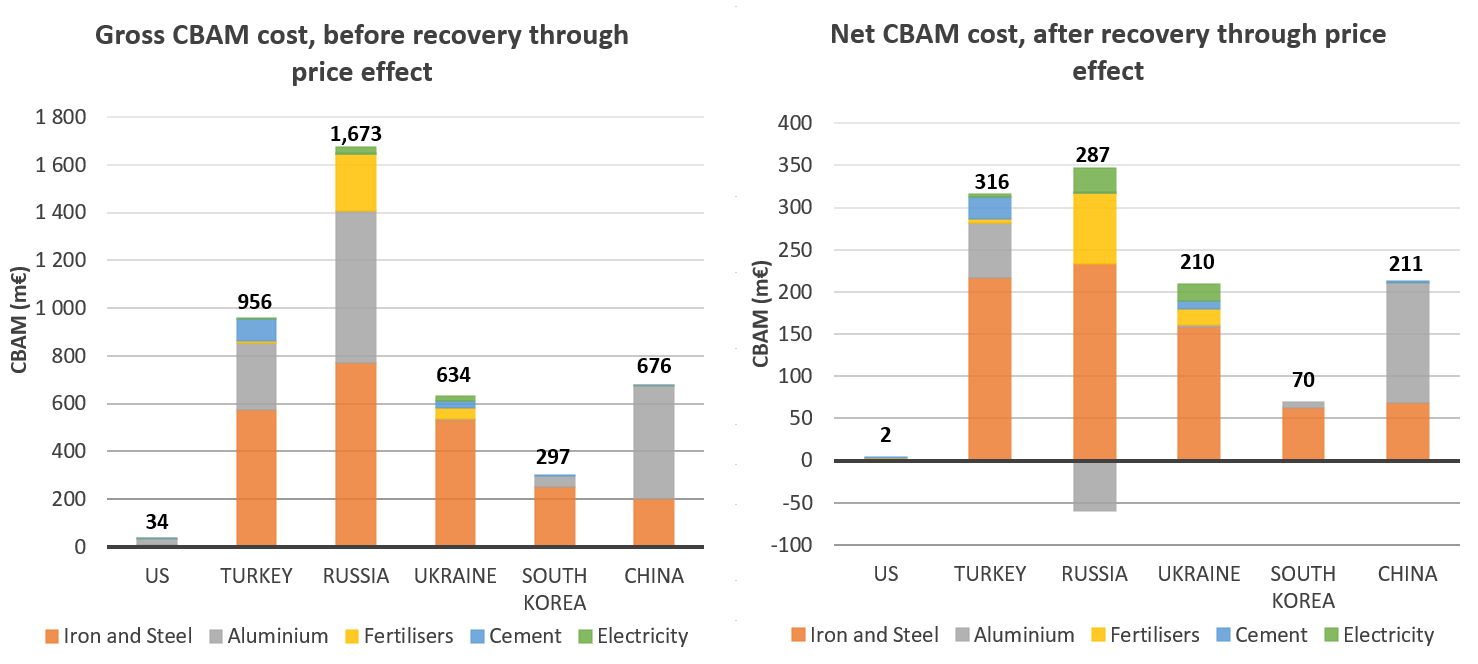
Gross and net CBAM for goods from main trading partners (assuming no free allocation)
Sandbag will publish a more complete report later this month, which will detail methodological aspects.
Photo by Morgan Sessions on Unsplash

